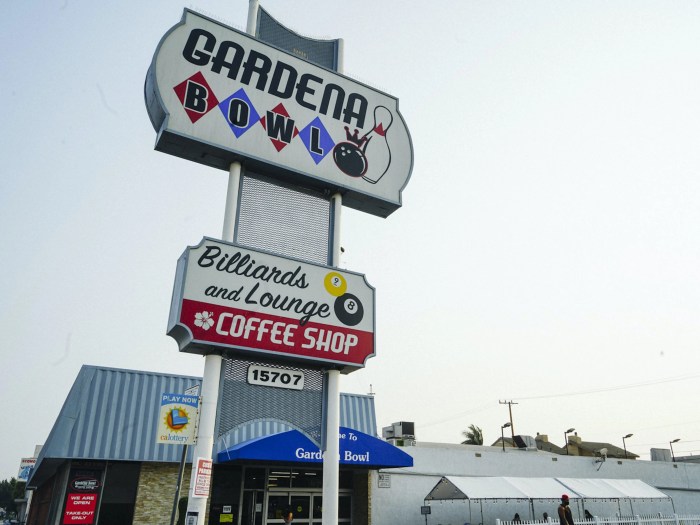Gardena Bowl Coffee Shop Menu A Deep Dive
Gardena Bowl’s coffee shop menu is more than just a list of beverages and pastries; it’s a reflection of the establishment’s brand, a strategic pricing model, and a key driver of customer experience. This analysis dissects the current menu, examining its pricing strategy against competitors, the effectiveness of its descriptions, and the overall design and layout. We’ll explore opportunities for improvement, including menu reorganization, enhanced visual presentation, and the incorporation of seasonal offerings and dietary considerations. The study incorporates both quantitative and qualitative data, including a competitive price analysis, detailed menu item descriptions, and suggestions for improving visual appeal and customer engagement. We also delve into the crucial aspects of menu profitability, suggesting strategies for optimizing sales and enhancing customer satisfaction through thoughtful beverage pairings and targeted marketing campaigns based on customer feedback. Gardena Bowl Coffee Shop Menu Gardena Bowl Coffee Shop’s menu pricing strategy requires careful analysis within the competitive landscape of Gardena’s coffee market. Understanding its price points relative to established competitors is crucial to assessing its market positioning and potential for profitability. This analysis examines Gardena Bowl’s pricing structure, comparing it to the average prices of similar establishments in the area. Price Point Comparison with Competitors The following table compares the prices of selected menu items at Gardena Bowl Coffee Shop with the average prices observed at three competing coffee shops in Gardena: The Daily Grind, Cafe Aroma, and Brewtiful Mornings. These competitors were selected based on their proximity to Gardena Bowl and their similar offerings in terms of coffee, pastries, and other cafe items. Prices are based on observations made in late October 2023 and may vary slightly depending on promotions or seasonal changes. Item Gardena Bowl Price Average Competitor Price Cappuccino $4.50 $5.25 Latte $4.75 $5.50 Espresso $3.00 $3.50 Blueberry Muffin $3.25 $3.75 Croissant $2.75 $3.25 Gardena Bowl’s Pricing Strategy Gardena Bowl Coffee Shop employs a competitive pricing strategy, generally offering its products at a slightly lower price point than its main competitors. This approach may be intended to attract price-sensitive customers and increase market share, particularly in a competitive market with established players. The slightly lower prices, however, do not appear to significantly compromise quality, suggesting a focus on efficiency in operations and sourcing to maintain profitability. This is a common strategy among businesses seeking to establish themselves against entrenched competitors. For example, many budget airlines successfully utilize a similar pricing model to gain traction. Justification for Gardena Bowl’s Pricing Structure Gardena Bowl’s lower pricing may be justified by several factors. Firstly, the shop may benefit from lower operational costs due to efficient management, potentially including streamlined processes or lower rent compared to its competitors. Secondly, it might be leveraging economies of scale in sourcing ingredients, negotiating favorable terms with suppliers to keep input costs low. Thirdly, Gardena Bowl may be prioritizing volume over higher profit margins per item, betting on higher sales volume to offset the lower price per unit. This strategy requires a high volume of customers to be successful, and its long-term viability depends on maintaining consistent customer traffic and operational efficiency. Starbucks, for instance, has demonstrated the success of a similar strategy in its initial growth phase. Menu Item Descriptions Elevating the Gardena Bowl Coffee Shop menu requires more than just listing items; it necessitates crafting descriptions that resonate with customers, enticing them to experience the sensory delights offered. Strategic use of language can transform a simple menu into a compelling narrative, driving sales and enhancing customer satisfaction. This involves moving beyond functional descriptions to evocative prose that appeals to the senses and creates a memorable dining experience. Improving menu descriptions involves a strategic shift from purely functional language to sensory-rich descriptions that appeal to the customer’s imagination. This approach transforms the menu from a simple list of items into a curated experience, highlighting the unique qualities and appeal of each offering. The following examples demonstrate how this can be achieved. Revised Menu Item Descriptions The following table compares the current and improved descriptions for five selected menu items. The revisions focus on incorporating sensory details and highlighting the unique selling propositions of each item. Menu Item Current Description Improved Description Classic Latte Espresso and steamed milk. A velvety smooth latte, crafted with rich espresso and perfectly steamed milk, creating a harmonious balance of bitterness and sweetness. A comforting classic, ideal for any time of day. Blueberry Muffin Blueberry muffin. A moist and tender blueberry muffin, bursting with juicy blueberries and a subtly sweet crumb. The perfect complement to your morning coffee or afternoon treat. Avocado Toast Avocado on toast. Creamy avocado spread generously on toasted multigrain bread, seasoned with a sprinkle of sea salt and a hint of red pepper flakes for a subtle kick. A healthy and satisfying start to your day. Sunrise Smoothie Blend of fruits. A vibrant sunrise in a glass! This smoothie blends the sweetness of mango and pineapple with the tang of orange juice, creating a refreshing and invigorating tropical escape. Chocolate Croissant Chocolate croissant. Flaky layers of buttery croissant dough envelop a rich, dark chocolate filling, creating a decadent treat that melts in your mouth. Indulge in a moment of pure bliss. Enhanced Customer Experience Through Revised Descriptions … Read more

